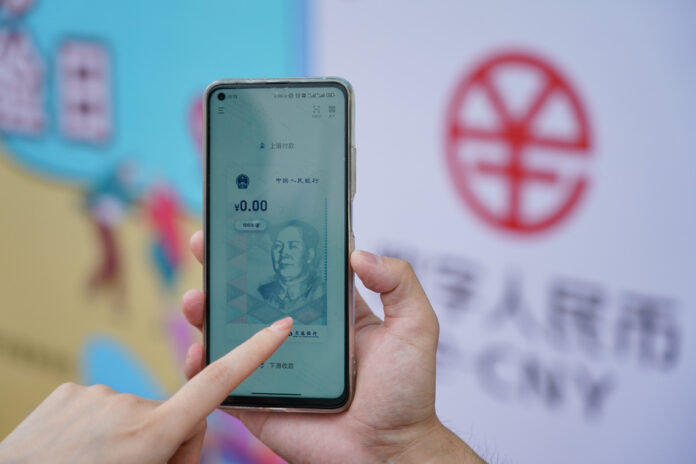
In 2025, the digital RMB is expected to undergo significant changes in its top-level design. The recent establishment of the International Operation Center in Shanghai and the Operation Management Center in Beijing has heightened anticipation for the next steps in this transformation.
On October 27, at the opening ceremony of the Conference of Financial Street Forum 2025, Pan Gongsheng, Deputy Governor of the People’s Bank of China, stated that the PBOC would further optimize the digital RMB management system, study and refine its positioning within the monetary hierarchy, and support more commercial banks in becoming official digital RMB business operators. His remarks conveyed two key signals: the digital RMB’s role as a cash-equivalent instrument (M0) may change, and the official list of operating institutions is likely to expand.
The potential change in the M0 positioning was foreshadowed earlier by Mu Changchun, Director-General of the Digital Currency Institute at the People’s Bank of China, at the Bund Summit on September 13. Mu emphasized that to align the money supply with economic growth and price expectations, while enhancing the enthusiasm of both commercial banks and users, the digital yuan’s measurement framework needs to be upgraded. He argued that in a developed economy, enhancing the money-creating capacity of the digital yuan becomes increasingly important. Currently, Chinese commercial banks are responsible for wallet management, fund security, payment services, and compliance with anti-money laundering regulations, while the digital yuan remains a direct liability of the central bank. Mu noted that allowing ordinary users and businesses to hold idle, non-interest-bearing digital yuan diminishes its potential economic value.
In parallel, several joint-stock banks have begun preparing to become digital RMB operating institutions. For instance, Shanghai Pudong Development Bank (SPDB) recently announced recruitment for developers, testers, and domain architecture designers specialized in the digital yuan, with all positions located in Chengdu. The domain architecture designer will lead the overall construction and implementation of SPDB’s digital RMB projects, including designing technical and database architecture, distributed transaction systems, and ensuring system stability, scalability, and security. Although SPDB has not yet been officially approved as a digital RMB operator, the bank is actively preparing its systems in alignment with the PBOC’s requirements for second-tier operating institutions.
Currently, ten institutions are officially recognized as digital RMB operators: the Industrial and Commercial Bank of China, Agricultural Bank of China, Bank of China, China Construction Bank, Bank of Communications, Postal Savings Bank of China, China Merchants Bank, Industrial Bank, WeBank (WeChat pay), and MYbank (Alipay). The potential inclusion of new operators like SPDB reflects the PBOC’s broader goal of expanding the digital yuan ecosystem.
Historically, the digital RMB has been positioned as a cash payment instrument (M0), a retail central bank digital currency primarily used for domestic payments. Like physical RMB, it is a liability of the central bank and carries no interest. However, industry experts have long called for a reevaluation of this positioning, suggesting that the digital yuan could gradually extend its functions toward M1 (narrow money) and M2 (broad money).
A major concern with the current M0 positioning is the lack of market-based incentives. Zhang Jianhua, a counselor at the PBOC and the Director of Financial Development and Regulatory Technology Research Center of PBC school of finance of Tsinghua University, noted that the digital yuan cannot generate interest under the M0 framework, and the 100% reserve requirement restricts its money creation potential. This discourages individuals, businesses, and operating institutions from actively using or promoting the currency. Commercial banks bear the costs and responsibilities of operating the system but cannot leverage digital yuan holdings for lending or profit, effectively turning these departments into cost centers.
Industry discussions increasingly focus on whether the digital yuan could transition from a central bank liability to a commercial bank liability. Zou Chuanwei, chief economist at Wanxiang Blockchain, explained that if the digital yuan moves beyond the M0 framework and adopts a fractional-reserve model, it would become a commercial bank liability, akin to deposits, supporting credit activities and multiplying monetary expansion, thereby unleashing greater financial potential. Under this model, digital yuan reserves held by commercial banks would become their liabilities to users, while loans issued would become bank assets, bringing the digital yuan into commercial bank balance sheets and enhancing monetary elasticity.
Zeng Gang, Chief Expert and Director of the Shanghai Finance and Development Laboratory, emphasized that enabling the digital yuan to create money would allow commercial banks to contribute more actively to credit supply, improve the efficiency of monetary transmission, and optimize liquidity allocation. Achieving this requires both robust technical infrastructure—secure, reliable distributed ledger collaboration between the central bank and commercial banks—and an updated regulatory framework to manage liquidity and mitigate financial risks.
Preparatory work for this evolution is already underway. Mu Changchun noted that the PBOC plans to refine regulatory, operational, and self-regulatory mechanisms for the digital RMB, expand its applications from retail to wholesale, and broaden its functions to include deposits, loans, remittances, and investment services. These steps aim to fully realize the digital RMB’s legal tender functions while improving financial resource allocation and service efficiency.
The selection of commercial banks as operating institutions will be based on rigorous criteria, including asset size, profitability, risk management, cash service capabilities, payment service experience, and technological innovation. As the second tier in a two-tier system, these banks provide wallets to users, facilitate exchange and circulation services, and collaborate with smaller banks, non-bank financial institutions, and third-party service providers to create a seamless digital RMB ecosystem. Experts recommend that collaboration among operators should be actively guided to avoid redundant development, streamline wallet registration, and promote products leveraging digital RMB smart contracts—spanning fund management, supply chain finance, SME lending, and cross-border services.
In essence, the digital RMB is evolving from a single payment tool into a comprehensive financial ecosystem. With its evolving monetary positioning and expanding network of operators, the digital yuan is poised to penetrate daily consumer payments, corporate financing, government services, and even cross-border settlement. As the central bank, commercial banks, and non-bank institutions collaborate, the digital RMB could fundamentally reshape the landscape of money, payments, and financial intermediation in China.
Source: 21jingji, xinhuanet, pbc, stcn



